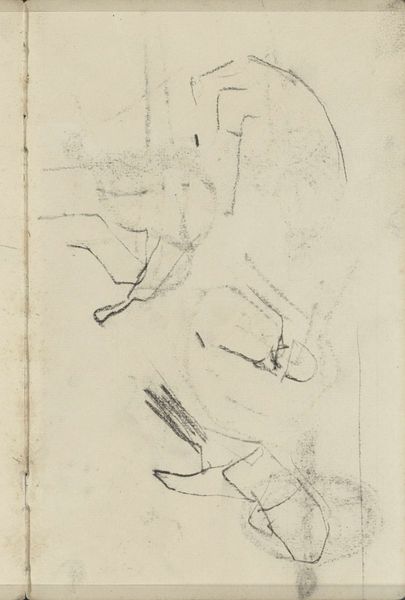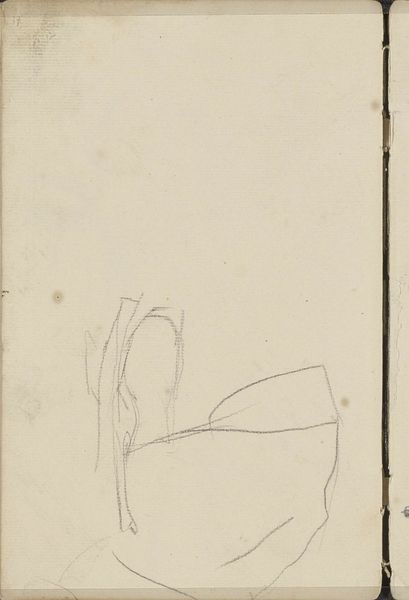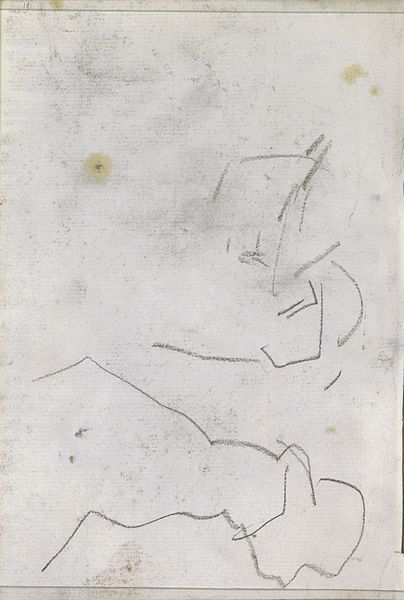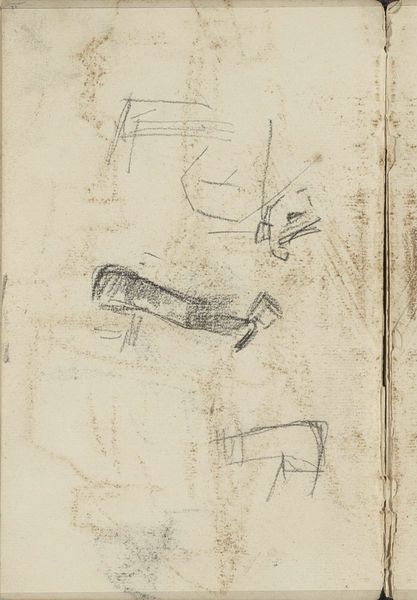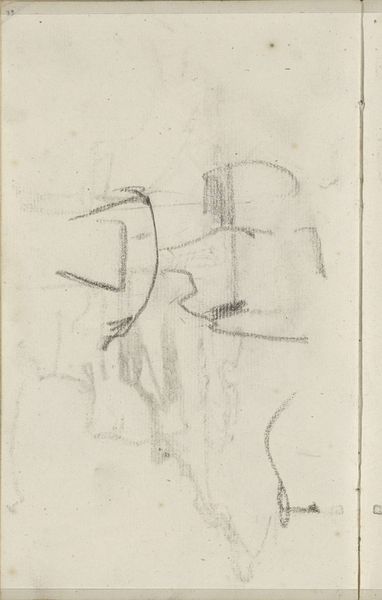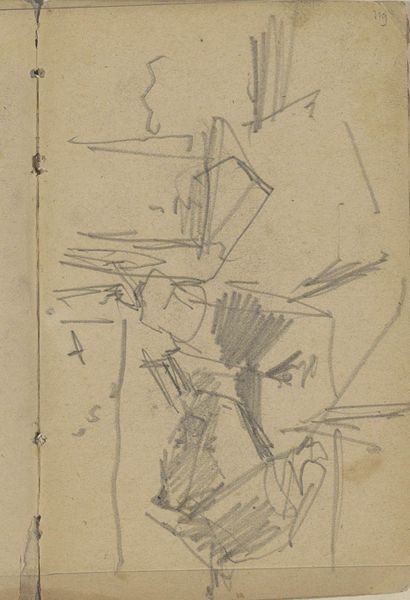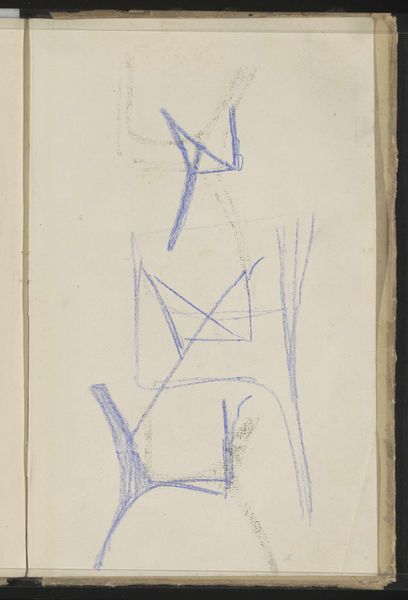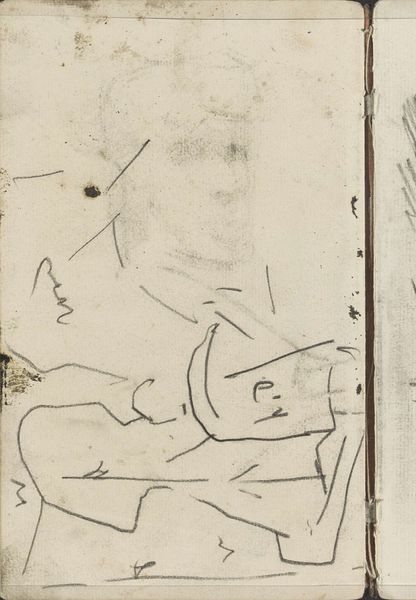
drawing, paper, pencil
#
drawing
#
amateur sketch
#
toned paper
#
light pencil work
#
quirky sketch
#
impressionism
#
sketch book
#
incomplete sketchy
#
landscape
#
paper
#
personal sketchbook
#
sketchwork
#
sketch
#
pencil
#
horse
#
sketchbook drawing
#
sketchbook art
#
realism
Copyright: Rijks Museum: Open Domain
Curator: This quick study by George Hendrik Breitner, simply titled "Studies, possibly of horses," was rendered in 1887. It’s currently held in the Rijksmuseum collection. It is a humble pencil sketch. Editor: Humble is right. It’s almost skeletal in its simplicity, wouldn’t you agree? The light pencil work leaves so much to the imagination, yet the impression of horses, of dynamic movement, still comes through, doesn't it? Curator: Precisely. I think it provides a unique lens into Breitner’s process. What do these raw lines signify about representation of animals and labor within Impressionism, a movement which sought to break from convention and capture reality outside the academy? It feels unfinished, private... Editor: Absolutely. Its sketchy quality makes me think of the accessibility of art. Pencil and paper - fundamental tools for creation available across class, region, and social barriers. But in saying this, the access to horses and time is likely what permitted the images on the page in the first place, if it is in fact horses being drawn. These studies required leisure. Curator: Yes, the reality of art creation always lies in tension; for Breitner to produce the work, he also had the material access to it in the first place. The sketches offer fleeting glimpses into a society and moment defined by both rapid change and entrenched privilege, class and even industrialization. In Amsterdam, we see these class dimensions at play in this urban scene and others captured during this period. What do you think? Editor: That’s right. A connection between artistic observation, materiality, and social access. These works exist not merely as aesthetic exercises but as artifacts of a specific social moment where the material realities enabled certain modes of observation and creativity for those of a certain class and background. Curator: Ultimately, these "Studies" serve as an opportunity to think critically about the creation of images, labour practices and who art is 'for'. Editor: I agree; these humble sketches present big social and creative insights to uncover about both the artist and us, the audience.
Comments
No comments
Be the first to comment and join the conversation on the ultimate creative platform.

